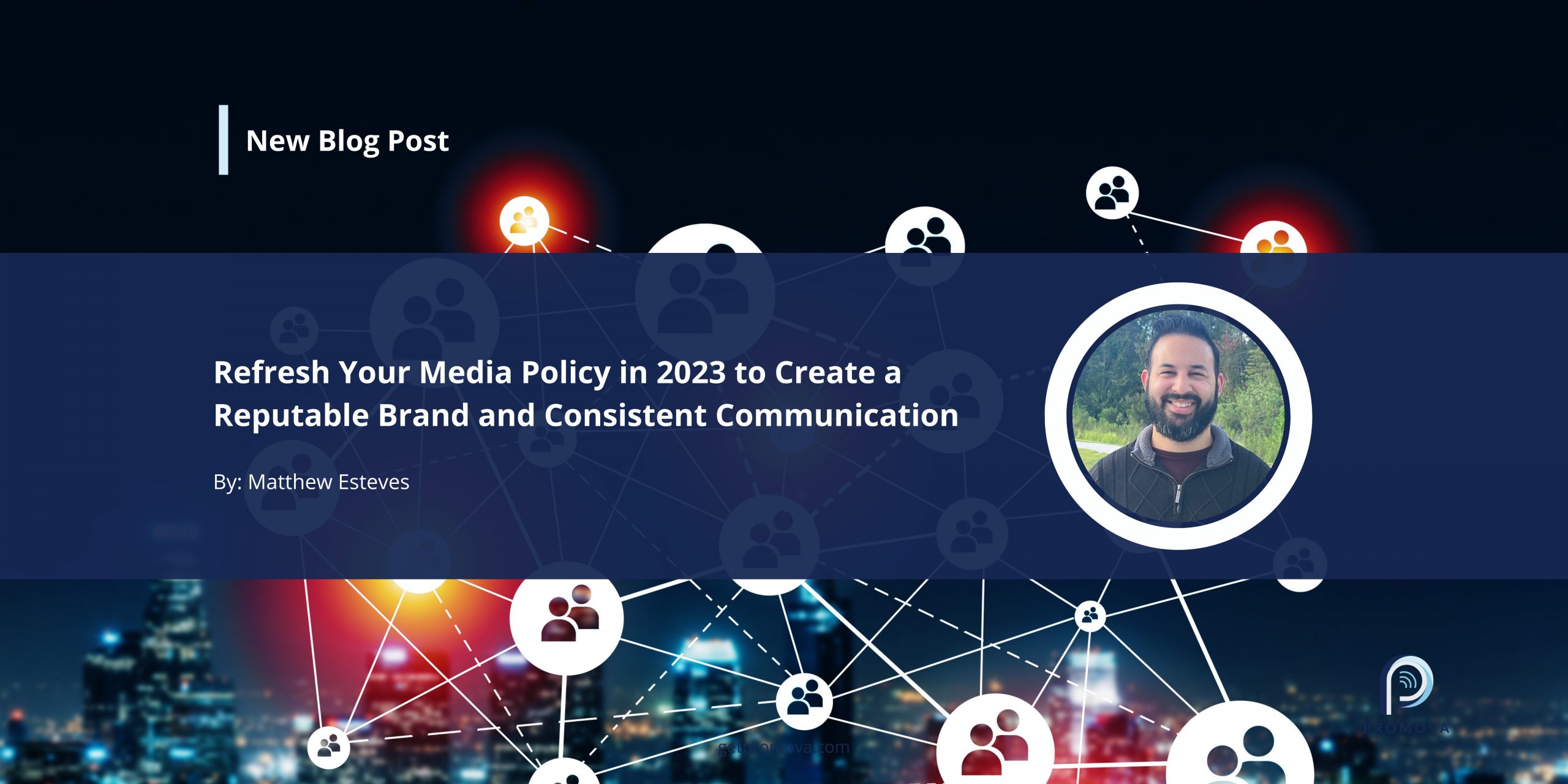
By: Matthew Esteves
Media exposure is integral to a company’s business, reputation, and ability to connect with a target audience. The benefits associated with bolstering a company’s media presence have never been more significant, especially through social media channels. Aspects such as humanizing a company’s brand, establishing a unique voice, telling the story of why you do what you do, and building connections with a wide array of customers are invaluable for projecting a positive online presence. However, creating a positive online image can go wrong if a company fails to safeguard its brand effectively through policy and training its employee base.
Given the power of social media and instant communication, companies are encouraging employees to share positive news and promote the business in their circles. Employee advocacy is essential for building an online brand and presence, but this brings various risks and requires policies to protect companies, stakeholders, and employees. Creating an internal media policy is crucial for establishing a consistent approach toward handling media requests, external communication, and social media interaction.
A media policy is built on three primary components:
- Regulations
- Roles
- Accountability
These pillars help protect companies from legal disputes, create consistency, and empower employees to communicate in a healthy way.
Educating employees on company media policies is vital for maintaining a positive and welcoming online presence that encourages customer interaction and business growth.
Here are some of the most important reasons why your company needs a media policy:
Safeguarding the Company Brand
Branding is one of the most crucial aspects of a business. Without a recognizable and reputable brand, customers won’t connect with your company and, thereby, won’t bring their business to you. Ensuring employees are not using their social media platforms in a way that denigrates the company brand is important for maintaining a healthy online image.
Tip: In your media policy, define appropriate online behavior for all company employees – from the CEO to the newly hired associate – across all platforms and establish consequences for employees who cast themselves or the company in a negative light.
Creating a Central Contact for the Media
Leveraging the media to broaden your online presence is wise but requires careful planning and consistency across a company’s workforce. A media policy designates a company’s central point of contact for media inquiries. This helps companies maintain a consistent voice, prevents confidential information from being disseminated, avoids undesirable media coverage, and establishes clear roles for employees to follow, avoiding any unintentional online snafus.
Media policies cover all aspects of external communication. Whether directly with a news outlet or employees interacting on social media platforms, these affect a company’s online brand and reputation.
Ensuring your media policy includes appropriate guidelines, practices, and education for your employees is essential in developing a robust, reputable, and engaging online presence.
Tip: Having a central point of contact is crucial for ensuring external media communications are consistent in voice and managing media opportunities. However, the central media contact should also provide training to all employees on a bi-annual basis to ensure guidelines and protocols are maintained.
Protecting Employees
While a company’s brand is important to protect, its employees are the lifeblood of the operation and require added protection. A media policy protects staff from online bullying, harassment, and potential defamation from outsiders who want to attack them. It also includes an educational aspect that ensures employees understand various uses of social media platforms, how media can be used to alter what they say or post, and how personal accounts can bleed into their professional interests—creating an undesirable dichotomy.
Tip: Educate your employees on the caveats of social media and define clear regulations and provisions in your media policy. This will help your team feel safe and protected in the online world.
Need assistance creating or updating your media policy? We are here to help.
